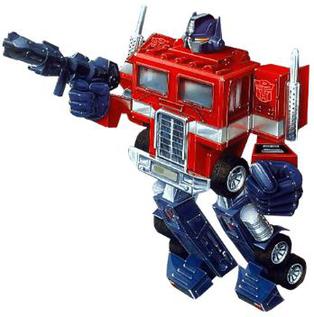
There were a lot of toys and cartoons that burst on the scene in the 1980s. They’ve been instrumental in most kids childhoods but did one stand above the rest?
Transformers were a toy line and cartoon series from 1984 produced by Hasbro and became one of the best selling toys of all time. Transformers led to an animated movie in 1986, many future toy lines and a series of live action movies.
This is it. The definitive toy and cartoon series to me growing up in the ‘80s. G.I Joe was a VERY close second but something just captured the imagination in a different way with Transformers. I don’t remember any other toys leaving me spellbound and in awe.
I remember looking under the Christmas tree one year and thinking I saw the distinctive box shape of what I hoped was Soundwave. The anticipation and excitement was next level until Christmas day when I realized it was a multi-pack of Life Savers.
Transformers shaped a whole generation and actually caused some significant heartache with Transformers: The Movie in 1986 the same way some of the pieces of crap made by Micheal Bay would decades later.
So let’s look back on what, in my opinion, is the greatest toy and franchise of all time.
Diaclone: The Original Transformers
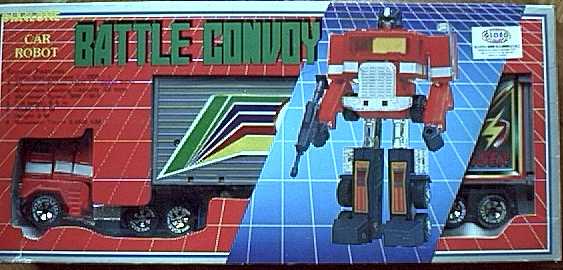
So the idea of Transformers as you know it may not have been an original idea. The origins of Transformers start with the Diaclone toy line made by the company Takara Toys launched in 1980.
It was a line of toys that included transforming vehicles and robots that were piloted by minature figures that came from the microman toy line.
In 1982 they put out a line of car-robots that also was able to transform. Hasbro, either too lazy to come up with something or just seeing the huge potential licensed the “car-robot” toyline along with the micro man line from Takara. They would combine both of these things together to create the Transformers.
Many of the Autobot version of the Transformers came straight from the car-robot line and a lot of future Transformers would already exist in the Takara toy line including the Dinobots, Insecticons, Decepticon planes, and the Constructicons.
Hasbro executives would go to the Tokyo Toy Show in 1983 on the lookout for some new toys they could import to North America. Hasbro bought up the whole kit and caboodle. They bought the rights and molds to all 28 figures that were in the Diaclone line.
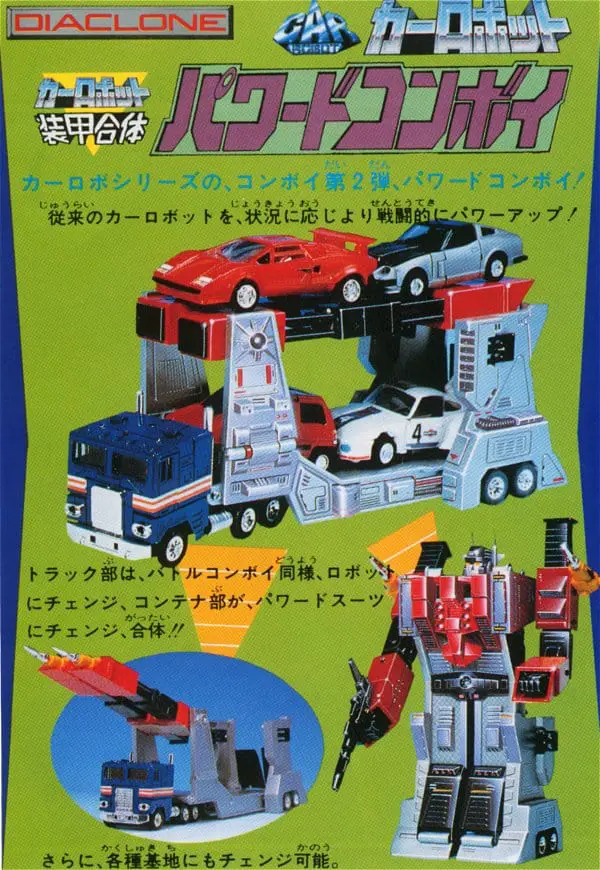
Creating The Modern Transformers
Hasbro had the great foresight to know it wasn’t always an ideal move to just release a new toy line out of the blue. Giving the toys a backstory and character profiles created more of an identity that kids could connect with.
If you just have some robots that transform it’s cool but it’s a lot more interesting when you realize they are a robotic race from a planet called Cybertron and are comprised of good and evil robots.
Hasbro would turn to Marvel to develop
Budiansky was a comic book writer, editor, and penciller, and worked for Marvel for 20 years. Besides coming up with names and backstories he would write some interesting “tech-spec” biographies that would end up being printed on the packaging that would sell the Transformers toys.
I remember this so well as these were such technical toys that were really a challenge to put together. They were like a robotic Rubix cube but you could learn about each robots specific technical details giving them even more unique personality quirks.
The Backstory Of Transformers
There’s probably no way that you don’t know this already but in case this is brand new to you, or you need a refresh, here is the legend of the Transformers:
The Transformers are made up of the heroic Autobots led by Optimus Prime and the evil Decepticons lead by the villainous Megatron. They lived on a metallic planet called Cybertron. Both groups would have to leave Cybertron to try and find new sources of energy to be able to revitalize their war efforts.
This would lead them to crashland on earth where they laid dormant for 4-million years. When they awaken in the year 1984 the Deceptions begin to pillage the earth while the Autobots attempt to protect the new world they find themselves on.
Now, this wouldn’t be fully revealed until the cartoon series would launch in 1984 but the general story of the Autobots vs The Deceptions was there. The cartoon series, which we’ll get to in a bit, was one of the earliest, and most successful examples, of a show being made to primarily launch a toy line.
An interesting side note – and if you know your 1980s robot toys – is that at the exact same time of all this the Gobots were also being launched but just didn’t catch on and I’ve written about that whole story and why they didn’t work.
The First Generation Of Transformers Toys
There would be a lot of Transformers t
The first
For the Decepticons three would turn into planes, one would be a cassette recorder, five would be mini cassettes (kids ask your parents what a cassette was) and one turned into a gun. Good luck getting that made today.
Here were the characters that made up that first release:
Autobots:
- Optimus prime and roller
- Bluestreak
- Hound
- Ironside
- Jazz
- Prowl
- Ratchet
- Sideswipe
- Sunstreaker
- Tailbreaker
- Wheeljack
Decepticons:
- Megatron
- Soundwave
- Buzzsaw
- Laserbeak
- Ravage
- Frenzy
- Rumble
- Skywarp
- Starscream
- Thundercracker
Though it seems like a big toyline, all of these were taken from the original Diaclone series and most are just clones of each other. They would change the paint and the accessories but the physical actions to transform them would be the exact same. So it’s like they only released 10-12 toys. Example: Ironside and Ratchet were exactly the same and so were Prowl, Bluestreak and Smokescreen. Ditto Starscream, Thundercracker, and Skywarp.
Series 2 Of The Transformers
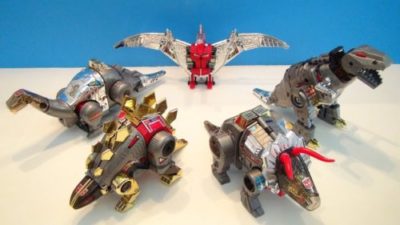
The second series of the Transformers reissued all the toys from the first set plus twenty-six new toys. This is where the branding became much more detailed and subgroups started to be introduced.
For the Autobots, some of the subgroups would be the Dinobots and the Omnibots while the Decepticons would have the Insecticons and Constructicons.
Along with all these new additions, Hasbro would introduce other features on the reissued toys like the heat sensitive rub signs. Remember that? You would rub those little decals and the heat would reveal either an Autobot or Decepticon symbol.
Seems like a cool new play feature but it was actually done as a way to reveal authentication against a lot of the inferior bootleg versions that were now flooding the market.
Both of these releases took place over 1984 and 1985 but were considered as one giant release. The two series and all the characters would make up the first generation of the Transformers for the cartoon series. Everything that came out over this time span was going to be the foundation of the Transformers universe.
The Transformers Cartoon Series
Here’s a big thing to point out that is often overlooked. Did you ever wonder why there was such an explosion of cartoons shows and toy based products in the 1980s? This wasn’t an anomaly but up until that point, there had been HUGE restrictions on anything that revolved around advertising to children.
This comes out of the 1970s and studies that showed that young children could not differentiate between an advertisement and a show. One of the first things Ronald Regan did after becoming president was lifting all these restrictions saying anything regarding the placement of promotional content within children’s programming was fair game.
And this opened the floodgates of cartoon/product tie-ins. It’s also why you saw so many things like cereal and fast food commercials that could easily be mistaken for cartoons. Companies now had free reign to promote to their heart’s desire. And that’s what the Transformers cartoon series was, a ½ hour commercial.
The original concept put together by Bob Budiansky, Jim Shooter and Dennis O’Neil were to become a four-issue comic book series and three-part cartoon series. Both of these things would be able to introduce the back story, and more importantly, introduce all the characters that little kids like me would soon be seeing on shelves.
The three-part pilot miniseries first aired in September 1984 and was co-produced between Marvel Productions and Sunbow Productions. It was animated by Toei Animation in Japan and then later on by AKOM in South Korea. Speaking of Marvel, check this article I’ve written about how we have the whole Marvel Cinematic Universe because of the Skip-It toy.
The toy line had a bit more of a militaristic, and obviously, robotic look to them and it was up to Japanese designer Shohei Kohara to give them a bit of a new look. He created a more humanistic appearance and they were even further simplified by Floro Dery who would become lead designer of the series.
So the story of this first three-part series is the basic back story I shared earlier. The Autobots and Decepticons leave Cybertron looking for new resources, they fight aboard a ship and crashland on earth. 4 million years later a volcanic eruption awakens them and the Decepticons are ready to pillage the earth. The Autobots befriend humans Sparkplug and Spike Witwicky to try to protect the Earth.
The end of the three-part series concludes with the Decepticons believed to be dead after their space-cruiser crashes into the ocean and the Autobots prepare to head back to Cybertron.
The First Season
The first official season put out 13 episodes that had already been commissioned and produced before that mini-series even aired. Hasbro was planning ahead big time knowing they were going to bombard unsuspecting kids like me with all the Transformers we could handle.
The premise of the first season is that the Decepticons had *spoiler alert* survived the crash into the ocean and were now building a “space bridge” to teleport resources back to Cybertron. A basic arc of the season involves the technology they use which results in the “Ultimate Doom” which was the three-part conclusion where the Decepticons teleport Cybertron in the Earth’s orbit.
The show was airing on Saturday mornings between October and December and served an important function of introducing new characters that would be added to the 1985 toyline.
Some of these were the epic Dinobots, Skyfire, the Insecticons, and the Constructicons who were able to combine to form Devastator and that was just awesome.
Big Moves In The Second Season
So now everything is heating up, kids like me are freaking the hell out after seeing this show and the subsequent toy line and we want, actually DEMAND, more. And they give it to us. The second season would release a whopping FORTY-NINE further episodes.
Seems like a large and random number but it was intentionally done. The 49 new shows, plus the other 16, added up to (checks calculator) 65 total episodes and this is the magic number of shows you need to move a series into weekday broadcast syndication.
This was pretty imperative because it would make Transformers part of a kids daily routine. It definitely was part of mine, and probably yours, that the first thing you would do when you got home from school was watch Transformers.
The show changed up the format and instead of having an arc, or theme, connect them all they focused on each episode as stand-alone episodes. This way the broadcasters could air them in any order and not create confusion among a storyline
Amping Up The Promotion Of The Toys
This is when things promotion wise stepped into high gear. Whereas the mini-series and the first series introduced the story and the main characters the second series was basically making each episode a commercial for individual characters. The spotlight of an individual character, or groups of characters, would connect to a specific release coming up.
This is why when you watch cartoon shows, specifically during this time period, you notice that the characters would always address each other by their full name. This was important to identify the character and subsequent toy. They also would refer to any vehicle by its full name which G.I Joe would also focus heavily on.
So in the shows instead of: “Hey Snake Eyes, hop in the jeep..”
You would get: “Hey Snake Eyes, hop in the Desert Fox”
Kids needed to know the name of the toy they would be screaming for in the middle of a Walmart. Fun fact: Hasbro put out 250 G.I Joe vehicles. The heartless bastards.
It wasn’t all just commerce as the series creators made it a point to expand on the series lore and create some more history. They also introduced the first female transformer and a girl named Carly who was Spike’s girlfriend.
They would also introduce the remainder of the 1985 toyline with a two-part episode called “Dinobot Island”. This was shown midway through the season and most of these new characters were new Autobot cars and mini-vehicles taken from the Diaclone and Micro Change line of Takara Toys.
They also introduced the Decepticon “triple changers” Astrotrain and Blitzwing which I was opposed with, and one of the most epic – and expensive toys- Omega Supreme.
While you’re here you might like to see my rundown of what I think are the 13 best toys of the 80s.
Transformers: The Movie
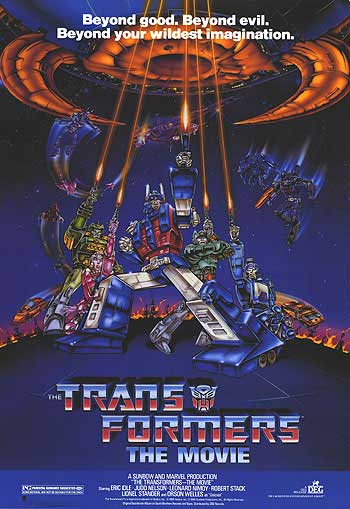
There would be a gap between the second and third season in order to put out Transformers: The Movie that came out on August 8, 1986. It takes place in the year 2005, twenty years after the events of season 2. This movie stirs up a lot of emotions in kids from that era, particularly me because I wasn’t allowed to see it in theatres.
The movie did a few things; it leads to the death of certain characters in order to clear away all the discontinued products from 1984 and 1985 and it introduced a new cast of characters for the 1986 toy release.
It also traumatized the living shit out of a lot of kids.
Besides the death and violence, it even had some cursing and would lead to the death of Optimus Prime. Not only that they kill him off like 23 minutes into the damn movie. The makers of the movie had no idea the impact they would have on a generation of kids as they were just trying to get some new toys out for Christmas.
The basic premise is that the Decepticons have conquered Cybertron while the Autobots hold up on nearby moons. Optimus Prime sends a shuttle to earth for supplies but it’s hijacked by Megatron leading to the death Sorry, “clearing out” of Ironhide, Ratchet, Prowl, and Brawn. The Decepticons travel to earth and attack Autobot City killing even more. Optimus returns with the Dinobots and he and Megatron have it out leading to the death of Optimus Prime.
Starscream disposes of the wounded Megatron in space while the
The end of all this is that the Autobots attack Unicron, Hot Rod attacks Galvatron and then obtains the matrix which transforms/re-brands him as Rodimus Prime the way that Optimus said would happen in their darkest hour. The power of the matrix then destroys Unicron.
Yikes.
Honestly, this movie is pretty good. I bought it on
Despite the trauma of killing off beloved characters and launching a new toy line it’s still a pretty creative movie and features some big-name actors including:
- Casey Kasem
- Robert Stack
- Judd Nelson (my name is Judd)
- Peter Cullen
- John Moschitta Jr (the voice of micromachines commercials)
- Leonard Nimoy
- Frank Welker
And in their last roles not only Orson Welles but Scatman Crothers. That’s just epic knowing this. Apparently, Orson Welles had no idea what the hell he was even making.
The Future Of Transformers
To follow the full path of the Transformers could take days and days and you’ve probably got better things to do. Or not but we can finish this up together.
In the coming years, they would release season 3 which picks up where the movie left off. The Autobots are now in control of Cybertron and Galvatron still leads the Decepticons. It also features the return of Starscream.
This series is a little more creative with interconnectiong storylines and arcs that connect a lot of the shows.
By the way, kids are still PISSED about the death of Optimus Prime resulting in a massive letter writing campaign that forced Hasbro to resurrect him in a two-part episode called “The Return of Optimus Prime” in March 1987.
They probably should have re-branded him as Optimus Prime Classic and if you don’t remember that
There would be a season 4 in November 1987 and this would bring the series to a close. But Transformers would not disappear from TV as a “Fifth season” was released which was just re-runs of 15 episodes from the original series along with the movie which was edited into 4 episodes.
I think I had long stopped watching at this point.
What Was Happening With The Toys?
The toys have always been going pretty strong. Not long after the movie, a few new lines were brought out such as the Headmasters and Targetmasters. There was also the Pretenders and Powermasters which featured a new version of Optimus Prime. Thanks, bastards…
In 1987 they would also release the Micromasters which were tiny versions of Transformers meant to compete against the hugely popular Micro Machines.
By the ‘90s Transformers were selling really poorly in the U.S but doing well in Canada, the U.K, and Japan.
Hasbro would release Generation 2 (there’s the debate that there’s no such thing as “Generation 1” as that was simply referred to as “Transformers) in 1993. The old Takara toy company would actually take over the production but pretty much just used the old molds from 1984 and 1985 with new color schemes and finishes.
They did change Megatron from a handgun to a tank due to safety and security concerns so that’s something.
There’s a lot more that followed so here are some of the other Transformers series:
- Beast Wars and Beast Machines (1996-2001)
- Robots In Disguise ( 2001-2002)
- Transformers: Armada (2002-2003)
- Transformers: Universe (2002-Present)
- Transformers: Energon (2003-2005)
- Transformers: Cybertron (2005-2007)
- Transformers: Kiss Players. Seriously, just look this one up… (2006)
- Transformers: Classics
Michael Bay Takes Over
Ugh, where to start with this.
Transformers felt like one of those untouchable franchises that just would never be able to crossover into a real movie. It seemed like a monumental task and the technology might not have been there. Micheal Bay proved that wrong in 2007 releasing the live action Transformers movie.
I was generally psyched for this and still thought it was o.k. It didn’t really embrace the mythos and history of the franchise and made it a little too human. Looking back now it looks like a masterpiece compared to the other pieces of crap he’s put out.
I apologize if you love these movies but they felt like a huge blown opportunity. There’s the obvious issue of the robot design being completely foreign to how everyone remembered them but they were trying to create a realistic interpretation of them and not a cartoon.
All in all the first movie had more of an “alien invasion” feel to it and didn’t seem to capture the essence of what made the Transformers so beloved. Revenge of the Fallen I actually thought was better but they get progressively worse from there. Don’t take my word for it, just read every review and Rotton Tomatoes score EVER about them.
So, in my opinion, the whole progression of the movies went from disappointment to unwatchable. I didn’t even see the last two which you if you had told ten year old me that would be happening he would probably roundhouse you in the shins.
The Legacy Of Transformers
Through all the ups and downs (Michael Bay) Transformers remains one of the biggest parts of the ‘80s and a huge part of everyone’s childhood.
There is no other toy that stirred up such excitement in me and I watched the cartoon show religiously. As I said, G.I Joe was a close second, and He-Man maybe rounds out my top three but nothing captured my imagination like Transformers.
To me, it’s the kind of toy a kid doesn’t even know he wants. It incorporates all the elements of technology, machines, cars, planes, action and a cool back story to create something that is a definitive part of the ‘80s.
-If you want to check out some amazing Transformers toys on Amazon there is the 20th anniversary Optimus Prime 12-inch figure from Hasbro.
-Also on Amazon is this Megatron figure that transforms into a tank. Here’s my favorite Decepticon, Soundwave toy also released by Hasbro.
-And last but not least on Amazon here’s an awesome 6.5-inch Grimlock figure.
I hope that you enjoyed this blog and if you want to get more epic 80s content, make sure you sign up for the Everything 80s email newsletter below!


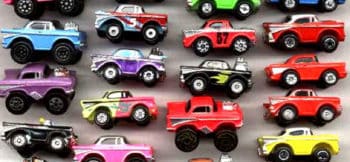
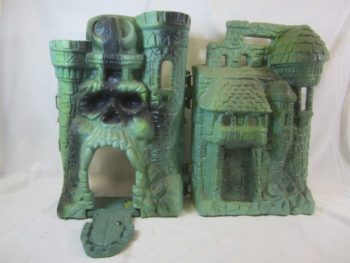
Comments
Comments are closed.